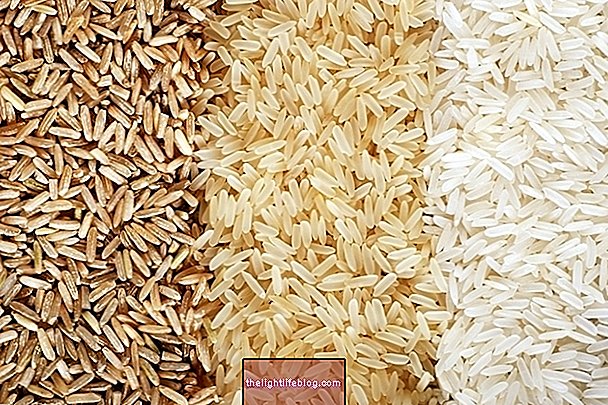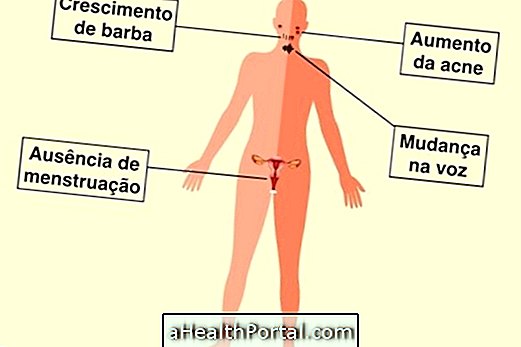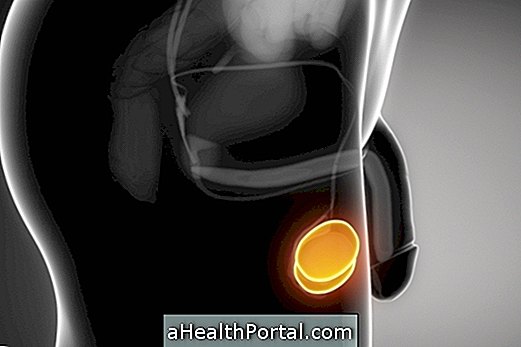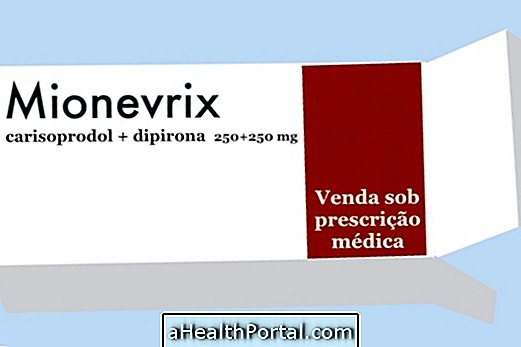The ostomy consists of a connection of the intestine directly to the skin to allow the exit of feces when the intestine is no longer connected to the anus. This usually happens after surgeries of treatments for problems in the gut, such as cancer or diverticulitis, for example.
Although most ostomies are temporary, since they are generally only used to facilitate wound healing after surgery, some can be maintained for life, especially when a large portion of the intestine is removed, which does not allow re-ligation to the anus.
Depending on its location, the ostomy can release soft or solid stools, known as colostomy, or liquid, and is called ileostomy.
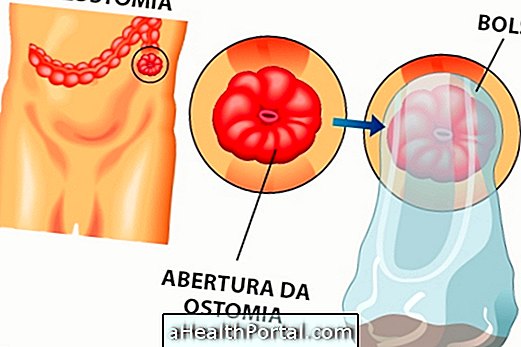
After surgery to the intestine it is normal that the stoma is very red and swollen, because the intestine is injured, however, these signs are reducing during the first week with the treatments done by the nurse.
How to change the ostomy pouch
To change the pouch of the colostomy or ileostomy it is recommended that:
- Remove the bag, taking off slowly so as not to hurt the skin. A good tip is to put some warm water in the area to help take off more easily;
- Wash the ostomy and skin around with a soft clean cloth and warm water. It is not necessary to use soap, but if you prefer, you can use a neutral soap, which must be removed before placing the new bag;
- Dry the skin around the ostomy well to allow the new pouch to stick to the skin. It is not recommended to use any cream or product on the skin without the doctor's advice;
- Cut a small hole in the new pouch, the same size as your ostomy, and stick the bag back in the correct place.
The contents of the dirty bag should be placed in the toilet and then the bag should be thrown away as it should not be reused because of the risk of developing infections. However, if the pouch is reusable, the manufacturer's instructions should be followed to wash it properly.

There are also some types of ostomy pouches that have 2 parts, making it easier to remove the bag because one piece always remains stuck to the skin while the other is removed and replaced. The piece that is stuck to the skin should be replaced at least every 2 or 3 days.
When to change
The number of times the pouch should be replaced varies according to the ostomy and the proper functioning of the intestine, but the ideal is to make the exchange whenever the pouch is almost full.
Where to use the ostomy pouch
The ostomy pouch can be used without any problem in all daily activities, even for bathing, swimming in the pool or entering a jacuzzi, as water does not affect the system. However, it is only recommended that you replace the bag before entering the water for the sake of hygiene.
Some people may not feel comfortable using the pouch all the time and so there are small objects, similar to lids, that can be placed in the colostomy and that prevent the stool from leaving for a while. However, it is necessary to know very well the intestinal transit to avoid the excessive accumulation of feces in the intestine.
How to care for the skin around the ostomy
The best way to avoid skin irritations around the ostomy is to keep the pouch in the correct place as this prevents feces from coming in direct contact with the skin. Thus, the most important step is to correctly measure the ostomy and cut the hole, in the bag, of the right size.
However, other precautions should also be taken to wash the skin thoroughly after removing the pouch and check with the help of a mirror if there is a dumpster in the lower part of the ostomy, for example.
If the skin becomes very irritated over time, it is recommended to consult a dermatologist or talk to your ostomy doctor to use a proprietary barrier cream that does not prevent the pouch from sticking to the skin.
How should food be
Each individual reacts differently to food, being necessary to be alert to foods that cause disorders such as constipation, strong odor and gases. For this, you should try new foods in small quantities, noting the effects they cause on the ostomy.
In general, it is possible to have a normal diet, but one should be aware of foods that favor the appearance of intestinal problems, as shown in the following table:
| Problem | Colostomy | Ileostomy | What to do |
| Liquid stools | Green fruits and vegetables | Green fruits and vegetables | Consume cooked fruits and vegetables, and avoid leafy vegetables |
| Constipation | Potato, white rice, yam, banana dish and white wheat flour | Potato, white rice, yam, banana dish and white wheat flour | Prefer rice and whole foods and drink at least 1.5L of water |
| Gases | Green vegetables, beans and onions | Green vegetables, beans and onions | Consume teas of nutmeg and fennel |
| Odor | Boiled egg, fish, seafood, cheese, onion and garlic, raw, alcohol | Green vegetables, cabbage, alcohol and raw onion and garlic only in excess | Consume food that neutralizes the smell, shown below |
Foods that should be consumed to help counteract the smell of feces are: carrots, chuchu, spinach, cornstarch, plain yogurt, whole wheat germ without whey, concentrated parsnip or celery tea, apple peel, mint and bark tea and guava leaf.
In addition, it is important to remember that skipping meals and staying too long without eating does not prevent the production of gas, and it is necessary to eat regularly to improve the functioning of the ostomy.







